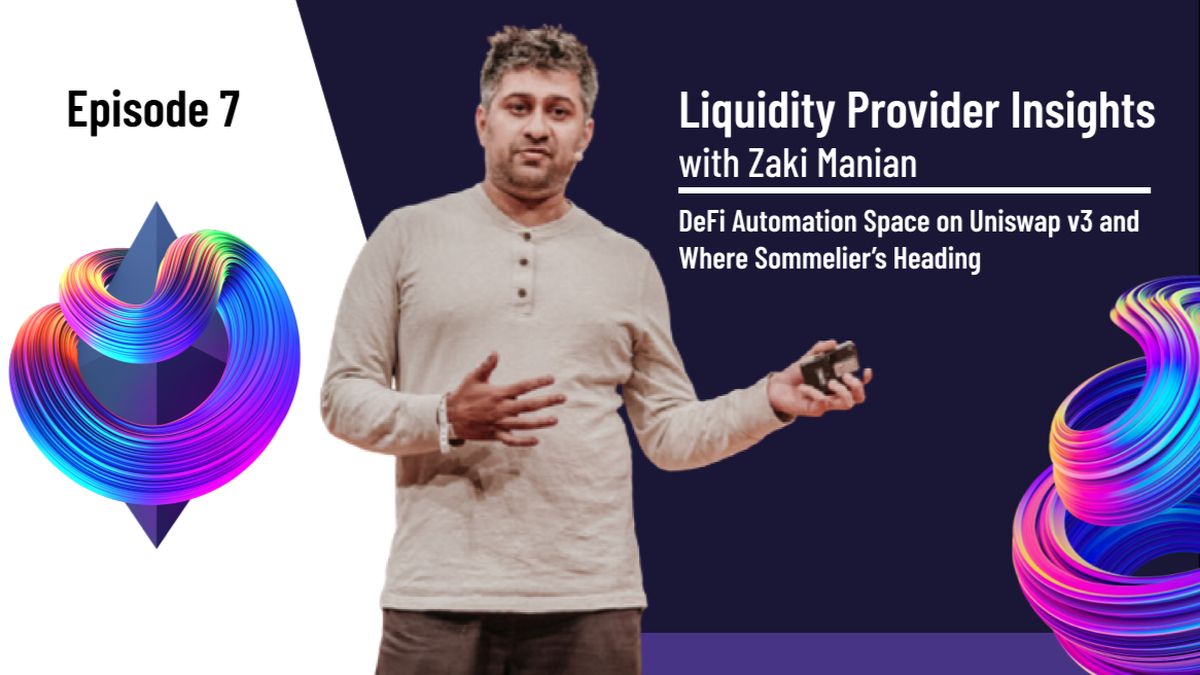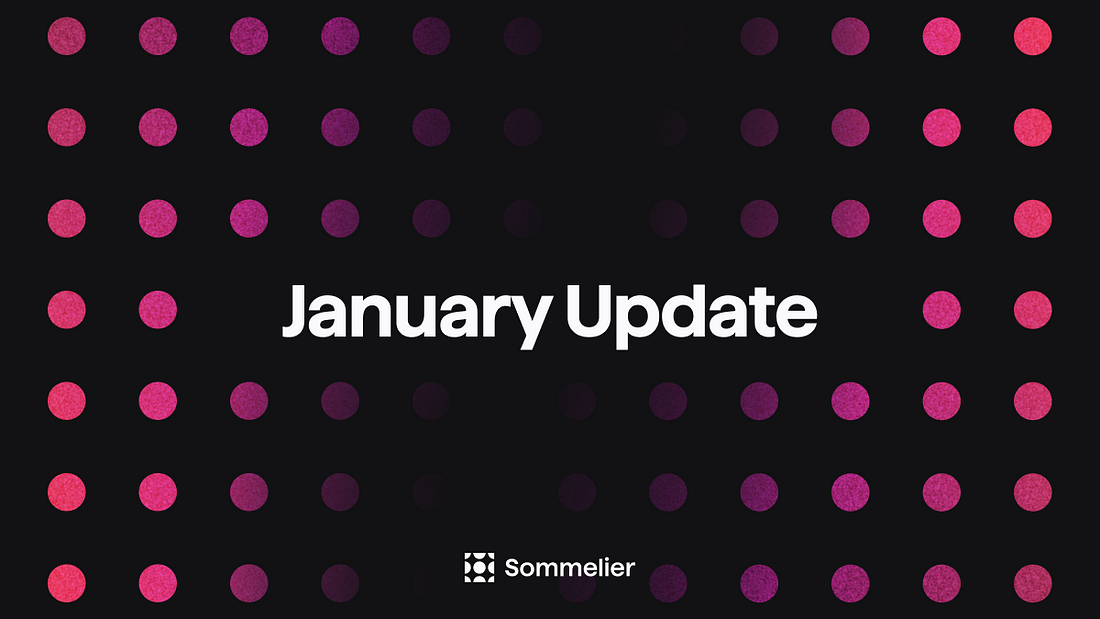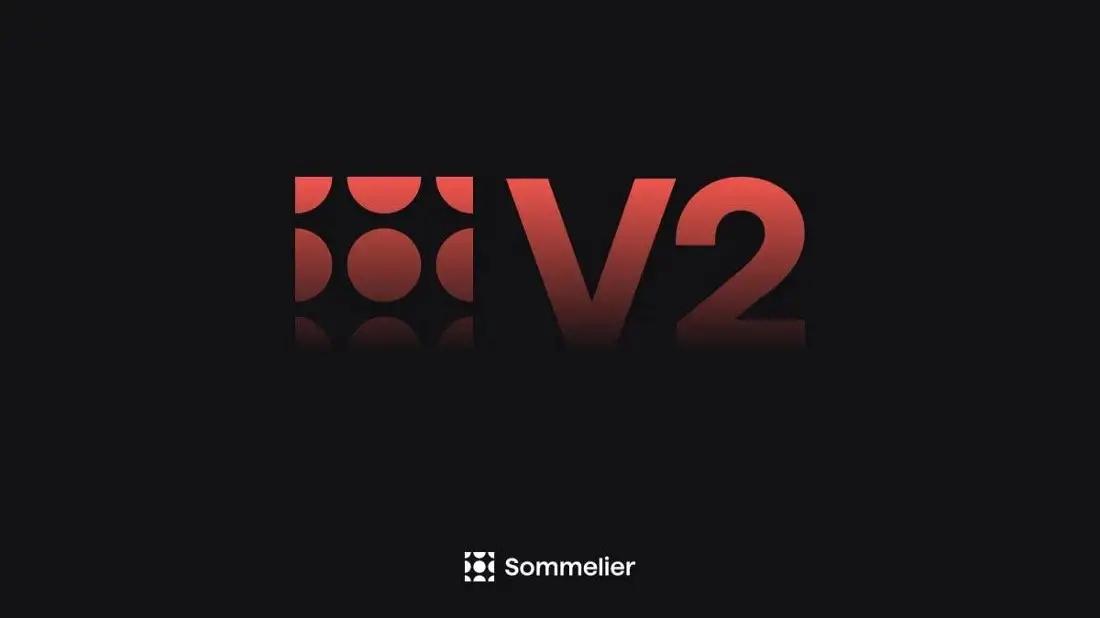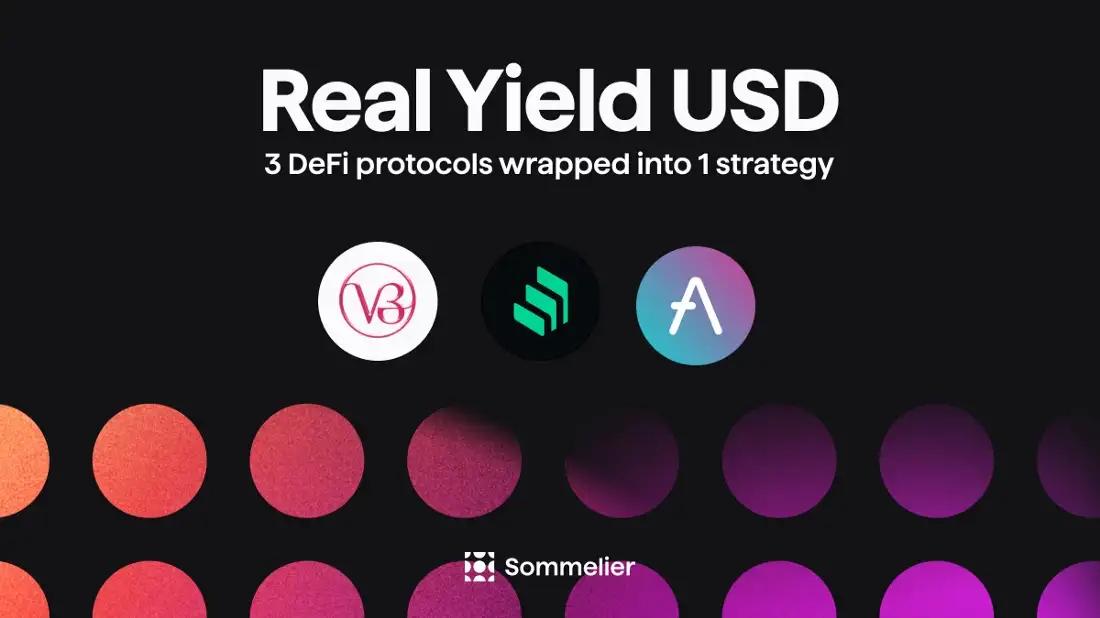Liquidity Provider Insights With Zaki Manian - Ep. 7 - DeFi Automation Space on Uniswap v3 and Where Sommelier’s Heading
Sommelier’s co-founder and leader, Zaki Manian, shares some insights on what’s happening in the DeFi automation space on Uniswap v3, then moves to update liquidity providers on what he’s seeing in the broader ecosystem. Take it away, Zaki:

“Last week, it was great talking to Charm Finance. There’s one way to think of this as we’re all competing teams trying to capture the Uniswap v3 rebalance mindshare, but it’s really we’re all writing open source code and learning together at the same time. That is the spirit of DeFi. It is a technical challenge. How do you build one of these rebalancers? And, we’re in the early stages of it and we've started to see some rebalancers that have a lot of on-Ethereum chain logic starting to launch, which is one approach, but an approach I think is not necessarily going to be easy to succeed with.
“We’re taking this validator set co-processor approach to building what we’re building. But, we’re starting to see the core challenges of rebuilding. One is: “If you just chase the price naively you’re constantly buying high and selling low, and that is not a successful trading strategy. And, so what we’re starting to see is folks like Charm trying to figure out, ‘Hey can I have some limit orders that are out there with some more capital to buy us back in as the price moves so we’re not always selling high and buying low, and we get to buy low sometimes to offset that?’ I think it’s an interesting approach.”
Designing the new, more profitable vault
If you want to have a minimally trusted keeper it means that you’re using on-chain data for everything about your position. Zaki explains:
“You’re tracking how the price is moving from the Uniswap v3 Oracle. And all the keeper is doing is the job of moving the positions on an ongoing basis. And, I’m inclined to believe that a given vault strategy is going to have to evolve over time. So in the keeper world, you have the vault, it’s not profitable anymore, the end user has to move into the new, more profitable vault.”
He thinks there’s room for a little bit more of a strategy. Zaki says:
“We need a strategy with more discretion, and then using the validator set to manage and distribute that discretion so it’s not all sitting in one centralized party. And, so, you have this evolving set of validators who are going to change the vault strategy over time. In a market that’s bounded and sideways, one way of allocating liquidity is going to work. In a market that is suddenly moving up or down you have new strategies that are going to work. The difference between the parts of the design space is basically how much flexibility do we build into these vaults? If you build too much flexibility you move into this basically centralized thing where you’re managing other people’s money. If you build in too little flexibility, the vault can be wrecked by different changing conditions. These vaults have a real risk of loss. Not in terms of people stealing your money, but in terms of just a trading strategy that turns out poorly. I think we’re all just starting to gain experience with this and it’s very exciting early days. What we are really working on now is a single-validator version of Cellars, which is our vault, getting that out into the world sometime within the next couple of weeks and starting to build some more experience with managing these positions.”
“The other thing is I think every pair is going to have its unique characteristics as well and I think this is going to be another big piece in how this gets built out.”
Execution + computation is a big differentiator
In Sommelier, validators have both an execution as well as computation function. Keepers have only computation. Zaki says he thinks it’s a big differentiator between on-chain Ethereum strategies and others.
“I think it’s going to make a huge difference. Because, who are you really competing with? Who you’re competing against is a fund, which can do as much computation as they want off chain, and look at all the data sources that they want that are off chain. They’re not only limited to we can look at this one price oracle, we can look at prices across numerous, centralized exchanges, they can look at order flow. I think that’s where this is going. So this is again the validator set can do the same kinds of things: compute over centralized exchange order flow, compute over larger amounts of data, look with a lot of precision and say, hey this is where our liquidity is going to go, but it is a hairier design.”
In a Sommelier world, liquidity providers really pay fees to have validators both execute and also make the best choice out of a series of choices, whereas in the keeper the only role you’re just paying for somebody to execute and then you still need to depend on the authors of the protocol to be incentivized to design the best.
“And the authors of the protocol are at a pretty significant competitive disadvantage against a fund. We are trying with Sommelier to provide more of the capabilities to the validator set that a fund might be able to participate in. It’s hard, no doubt about it. The easiest thing to do would be to just start a fund. [little laugh].
Security in Sommelier vs on-chain keeper world?
Zaki explains what’s best to fend off attack::
“In theory, the validator world is going to be tougher to economically attack than the on-chain keeper world. You have unbonding periods. You can’t just flash-loan a price oracle. One of the challenges, I think, that is going to occur is again, how do you offer a product in the long-tail of assets rather than the very liquid USDC Eth, which is pretty hard to manipulate.
“There is definitely going to be an adversarial component of this where people are going to try to trick liquidity providers into moving funds in predictable ways and then just opportunities to extract MEB, all of these things. There is an attack surface area here that is interesting and exciting. All I can say is we’re thinking about it.”
Overall: What’s been happening lately in the broader DeFi ecosystem?
Users have been really on-boarded onto Layer 2s [L2s], Zaki considers what would be good for the growth of the space:
“Block space isn’t exactly fungible, but if there are more places where you can transact and do a transaction that you want -- and more opportunities to carve up the market -- this is the Cosmos vision of scaling. Application of specific blockchains. So, you’re going to see different applications gravitate toward Polygon, different applications propagate to Solana, different applications to various Cosmos chains and all of the L2s are going to be in the same boat with applications leading the way and bringing their ecosystems to it. Aave has brought an enormous amount of their application ecosystem to Polygon. You have various other Polygon center gaps like Slingshot etc. showing up on Polygon. Curve is there, SushiSwap is there.
“So, it’s not exactly application-centric. There are certain things that are just not there. Maker’s not there, Compound isn’t there. And so, again, the ecosystem partitions. That’s not necessarily the end of the world. We can get quite far this way. This is DeFi summer 2.0 kicking up Interchain edition. This hopefully will smooth the rise in gas prices and L2s will get more mature and it’ll be a good place.
What about Flashbots?
Zaki feels strongly that the worst experience for users is everyone fighting it out in the mempool for block space. He says:
“A user who might not care if their transaction completes in the next hour or two competing with arbs that are for the next block. And Flashbots moved these into two kind of distinct markets.
The other piece that’s happening is 1inch and other aggregators are starting to support Flashbots directly. The users are, again, going directly into Flashbots and not going into the mempool battlegrounds. And, again, this is a maturing of the blockchain architecture. It generally makes applications less confused about what gas price should be used.
Flashbots are an alternative mempool, you submit contract calls, which are ordered together, and then you also have a payout, a tip, a bribe to the minor that includes it. So, you’re completely outside of the gas price market, you’re not competing for how much you’re going to do. Like the way you’re saying here’s a whole sequence of contract calls, here’s how much money I make, here’s how much the miner is willing to get paid. And, it takes you out of this context of not being economically aware. It makes the mempool sort of aware of the underlying economics of what’s going on. So frequently there’s enough MEV [miner extractable value] in a typical swap or trade for that to get included without even having to pay a transaction fee. Again, kudos to Flashbots, it’s such an exciting development in this space. And, yeah, a lot of the high gas price environment has just been coming from users not having the right tools to use. And, so tools get better, gas prices go down. There’s some inherent limit. If everybody wants to trade here, gas prices have to be higher, but it doesn’t necessarily follow that the design of the underlying software can have a pretty big difference on whether or not you could be paying 2x, 5x, 10x , whatever is actually inherently necessary given the raw demand for the chain.
What can LPs expect in the coming weeks?
Will our Summer Edition enjoy a lull in gas market prices? Where should liquidity providers focus? Zaki says,
“I wouldn’t say that the L2 ecosystem has become fully fungible. If there are exciting trades to be made people will still want to settle on the Layer 1 [L1]. A lot of products are still only available on Ethereum L2 and so that is where people will go to get their products. But, people might not sometimes be too picky about what they farm and as yields and returns start to show up on other chains people will go, ‘Hey I’m just going to go farm on Osmosis or Solana or Polygon and don’t need to transact on Eth L1. And, only those people who really want those products that are on Eth L1 will be there.
“So, my mental model of this has always been that what we are building is a marketplace for secure, fault-tolerant computation and there are many places that can serve that demand. And, it doesn’t all have to sit on one chain so that ought to prevent such an explosion of gas prices, but you know, liquidation days are still going to be brutal.”
What’s next for Sommelier Cellars?
The Cellar contracts are out in the open and we’re working on it. Zaki reports:
“We’re working on a single validator implementation that’s being built in Rust to get some experience with it. And so, I’m hoping to have within the next two weeks on mainnet a small Cellar, you know I’m not encouraging anyone to put their money in. It’s going to be unaudited code and early strategies but we’ll be out there trying to make some money.”
More articles
© 2025 Somm by Bajanss OÜ –Maakri 36-50, Tallinn, Estonia 10145




